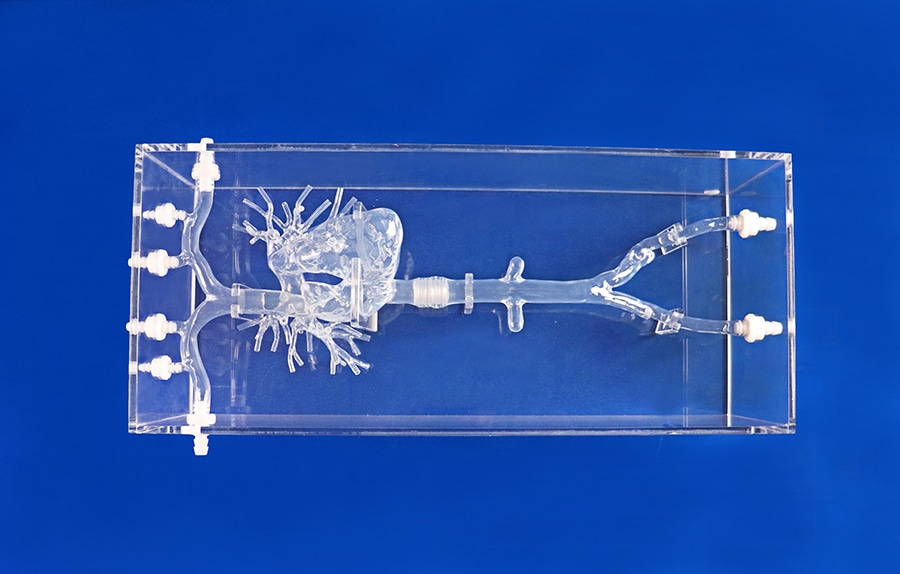
#Industry News
Understanding Pulmonary Embolism: Causes, Symptoms, and Treatment Options
Pulmonary Artery I
Introduction:
Pulmonary embolism (PE) is a serious medical condition characterized by the blockage of arteries in the lungs, usually caused by a blood clot that originates elsewhere in the body. This industry knowledge article aims to provide an overview of pulmonary embolism, including its causes, symptoms, and available treatment options.
Causes of Pulmonary Embolism:
The primary cause of pulmonary embolism is the migration of blood clots from deep veins in the legs or, less commonly, from other parts of the body. These blood clots, known as deep vein thrombosis (DVT), can dislodge and travel through the bloodstream, eventually lodging in the arteries of the lungs, causing a blockage.
Certain risk factors increase the likelihood of developing pulmonary embolism. These include prolonged immobility (such as during long-haul flights or bed rest), surgery, trauma, obesity, pregnancy, cancer, hormone replacement therapy, and certain medical conditions like heart disease or clotting disorders.
Symptoms of Pulmonary Embolism:
The symptoms of pulmonary embolism can vary depending on the size of the clot and the extent of the blockage. Some common signs and symptoms include:
Sudden onset of shortness of breath
Chest pain that worsens with deep breathing or coughing
Rapid or irregular heartbeat
Coughing, sometimes with blood
Anxiety or a sense of impending doom
Sweating
Fainting or lightheadedness
It is important to note that symptoms may vary, and in some cases, individuals might not experience any noticeable symptoms but still have a potentially life-threatening pulmonary embolism.
Diagnosis and Treatment:
Prompt diagnosis and treatment are crucial for managing pulmonary embolism effectively. If pulmonary embolism is suspected, the healthcare provider may recommend several diagnostic tests, including:
CT Pulmonary Angiography (CTPA): A specialized X-ray test that provides detailed images of the pulmonary arteries to identify blockages caused by blood clots.
Pulmonary Angiography: A minimally invasive procedure involving the injection of a contrast dye into the pulmonary arteries, followed by X-ray imaging to assess blood flow and detect any obstructions.
D-Dimer Blood Test: This test measures the presence of a substance released into the bloodstream when a blood clot breaks down. Elevated levels may suggest the likelihood of clots in the body.
Treatment options for pulmonary embolism aim to reduce immediate risks and prevent the formation of new blood clots. Common treatments include:
Anticoagulant Medications: Blood thinners, such as heparin or warfarin, are often prescribed to prevent the growth of existing blood clots and the development of new ones.
Thrombolytic Therapy: In severe cases, clot-dissolving medications may be administered to rapidly dissolve the blood clot obstructing the pulmonary arteries.
Inferior Vena Cava (IVC) Filter Placement: For individuals at high risk of recurrent pulmonary embolism, a small metallic device called an IVC filter may be placed in the inferior vena cava to trap blood clots before they reach the lungs.
Prevention and Outlook:
Preventing pulmonary embolism primarily focuses on reducing the risk of developing deep vein thrombosis. Individuals at risk should consider the following preventive measures:
Regular exercise and physical activity to improve blood circulation.
Avoiding prolonged periods of immobility, particularly during long trips or bed rest.
Maintaining a healthy weight and managing underlying medical conditions.
Using compression stockings to improve blood flow and reduce the risk of blood clot formation.
The outlook for individuals with pulmonary embolism depends on various factors, including the size and location of the clot, overall health condition, and promptness of diagnosis and treatment. With proper medical intervention, most individuals can recover from a pulmonary embolism. However, complications such as chronic thromboembolic pulmonary hypertension may arise in some cases, requiring ongoing management.
Pulmonary embolism is a serious medical condition that requires timely diagnosis and appropriate treatment to minimize potential complications. Understanding the causes and recognizing the symptoms is essential for prompt medical attention. By taking preventive measures and managing underlying risk factors, individuals can significantly reduce their chances of developing deep vein thrombosis and subsequently pulmonary embolism. Healthcare professionals play a crucial role in educating patients about this condition and implementing effective strategies for prevention and treatment.





